Even if you have a small growing space, raspberry bushes will yield plenty of delicious berries. If you get one of the everbearing raspberry varieties and treat them well, you’ll be picking berries from June until fall.
However, these beautiful bushes have quite a complicated growing pattern, and it takes a bit of expertise to get it right. A particular cane takes two years to bear fruit, growing only foliage during the first year, fruiting the next year.
Reader Poll: What online courses would interest you?
If you tried your luck with raspberries and ended up asking, “Why are my raspberry canes not growing,” you’re not alone. Keep reading and understand what might have been the problem and how to promote their growth.
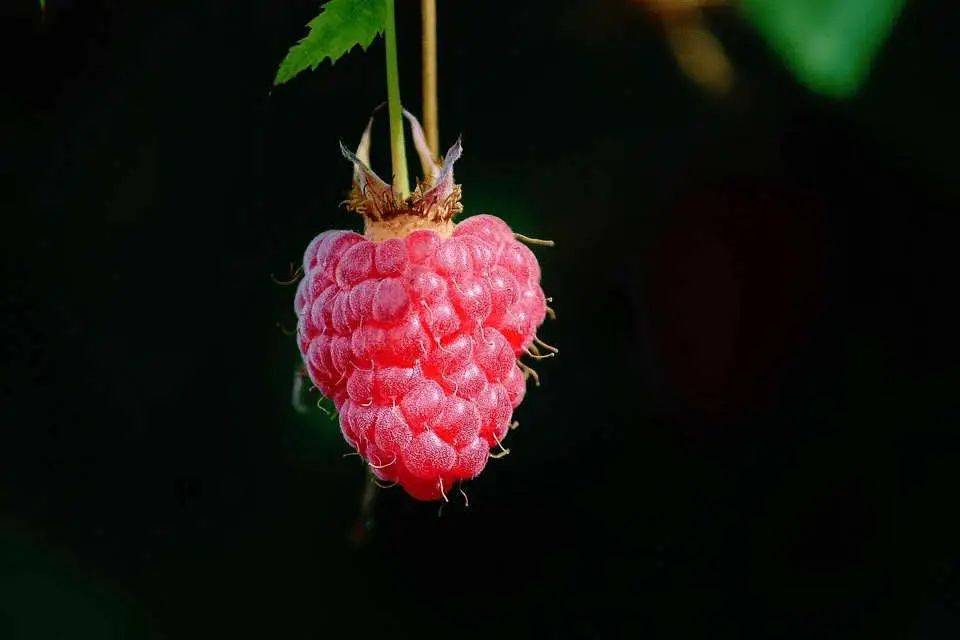
How To Tell What Kinds Of Raspberries You Have?
Different raspberry varieties have different demands when it comes to maintenance. Understand the kind of raspberry bush you have to give them the care they’re looking for. How to identify raspberry plants?
Raspberries Or Blackberries
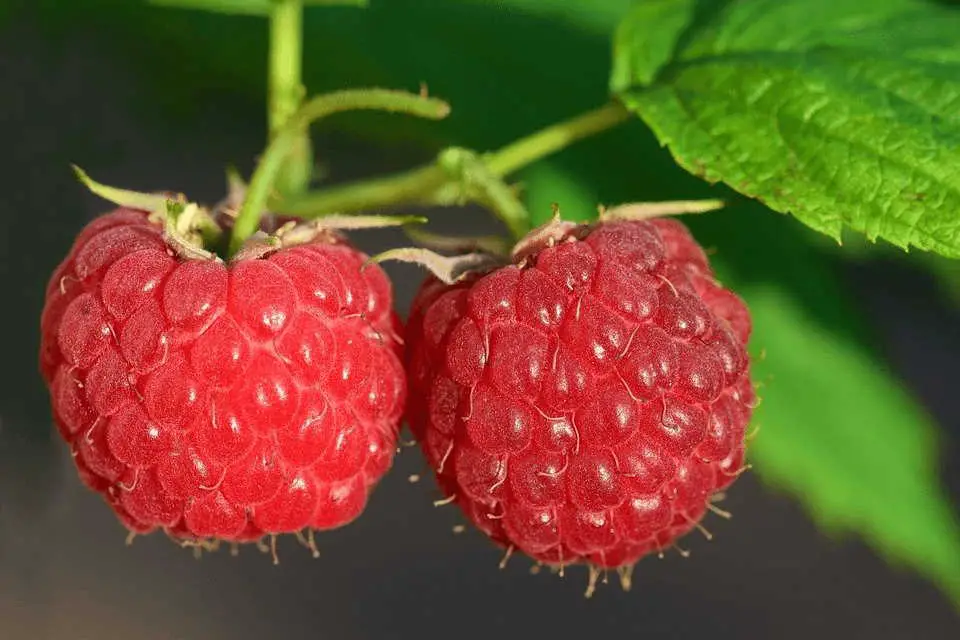
Raspberry canes grow upright or trail in several directions, depending on the variety. They usually have thorns, but these are smaller and softer than those on other thorny bushes. Light green spade-shaped leaves with toothed edges appear on the stems, with a greenish-silver color on the backside.
Subscribe to our newsletter!
Also, the raspberries are themselves distinguishable from the other berries if you pick one and inspect. While blackberries and other types of bramble berries have a core in them upon ripening, raspberries are the only kinds without one. Instead of a solid core, they’re hollow from inside.
What Kind Of Raspberries
Once you’ve identified the plants as raspberries, you can distinguish between the raspberry varieties from the berries’ color. If the berries aren’t red (as with the common red raspberries), you might have black raspberries. Don’t confuse them with blackberries. Yellow and purple varieties are also available, although less common.
If your raspberry bush is only fruiting in summers, it’s a summer-bearing raspberry. If it’s fruiting twice, once in summers, and then again in autumn, you’ve got everbearing raspberries. Only red or yellow varieties can be everbearing.
When Do Raspberry Canes Start To Shoot?
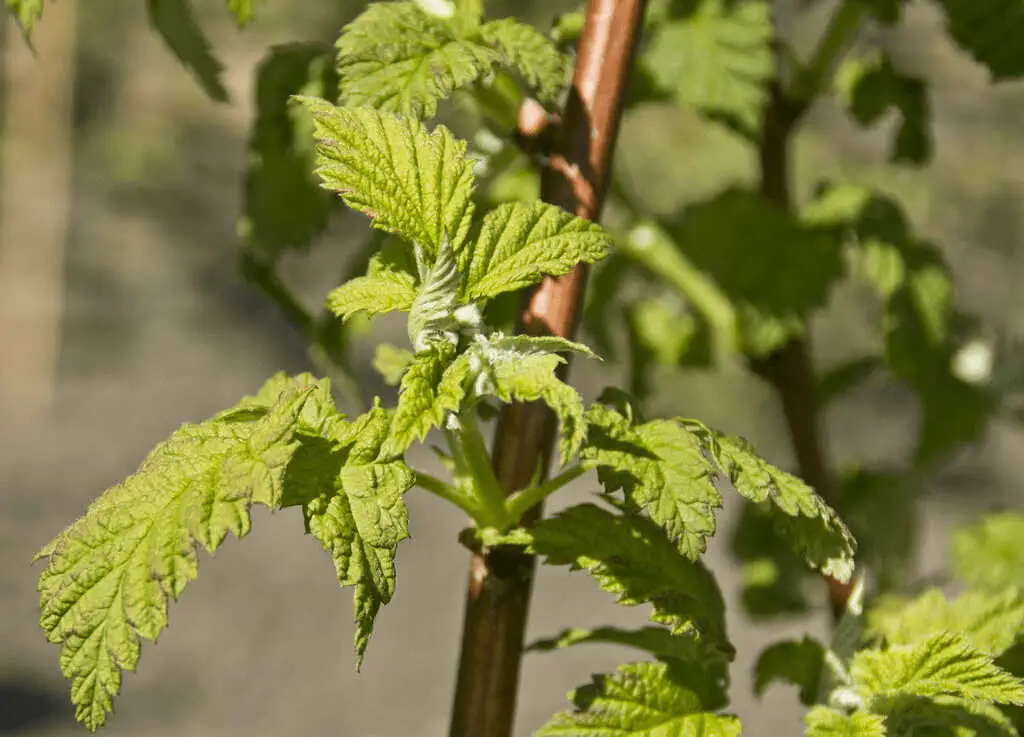
Raspberries are started from one-year-old canes bought at a nursery. If you’ve started with one of these and confused whether they’re already dead or it’s too soon for them to start giving leaves, here’s a little info to help you.
Dormant raspberry canes are planted in late fall in mild winter regions, or spring if the winters are cold. With proper care, new shoots will appear by springtime. Until the canes are well established, keep them well-watered, not letting the soil dry out. It generally takes about 4 to 6 weeks for the canes to develop fully. Remove any weak canes during the first summer.
How Long Do Raspberries Take To Grow?
Most varieties of raspberries fruit during their second season. The first season marks the vegetative growth while blooming, and fruiting comes along during the second season. Some everbearing raspberries may even bear a small crop the first autumn after they’re planted.
Summer-bearing raspberries will fruit in early summers and ripen over 2 weeks. The autumn-fruiting or everbearing varieties fruit all the way from June-July, until September, or even October, until the frost nips them.
How To Encourage Growth When Raspberry Canes Not Growing?
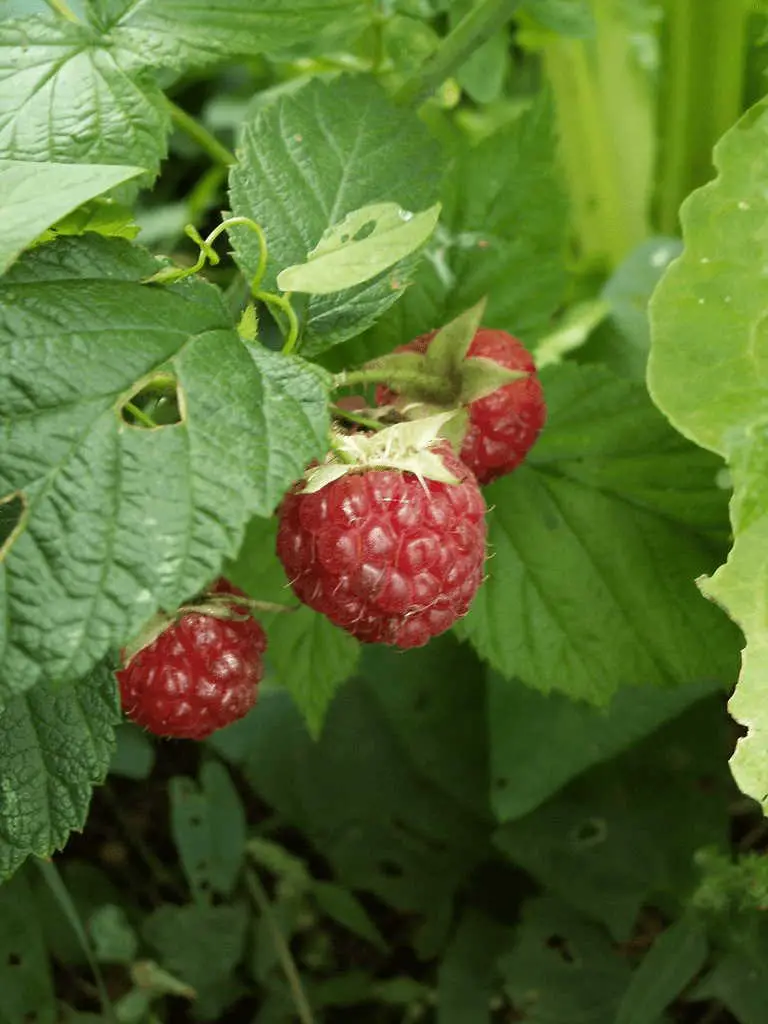
Are my raspberry canes dead? Quite a few gardeners end up asking this question since raspberry canes demand a bit of attention to stay alive. From planting to maintenance, raspberry growing involves certain technicalities. Overlooking any of these can beat the dust out of your crop. So how do you encourage raspberry growth? Here are some tips that can help keep the canes alive and thriving.
Tip No. 1: Don’t Plant Too Deep
One of the most common reasons for failure is planting the canes deeply. Raspberries are shallow-rooted and find it challenging to develop new canes if they’re sitting inches deep in the soil. When planting the dormant canes bought from the nursery, only barely cover the roots with soft, friable soil.
A 1-foot deep and 1-foot wide hole, with a handful of 4-20-20 fertilizer, should be enough for planting a cane. When backfilling with soil, add only enough to cover the roots. Press the soil around the canes by hand to prevent air pockets and to secure the canes to the ground, so they’re not knocked to the ground by strong winds.
Tip No. 2: Soak Bare-Root Canes in Vitamin B1
Prepare a magic energy drink for your canes by mixing together half a teaspoon Vitamin B1 growth stimulant in a quart of water. Soak the bare-rooted canes in this mixture for 6 hours before planting them in the ground.
Tip No. 3: Consider Raised For Nutritious, Well-Drained Soil
Raspberries are heavy feeders and don’t like waterlogged soil. Root rot is a common reason for dead canes, which results if they’re sitting in wet soil. Both these constraints are easily catered by using a raised bed. Make sure it’s at least 20 inches in height, mixing your regular garden soil with a fifth portion of sand, peat, and compost. If the pH is less than 6, you’ll also have to include a little lime to the mix to raise the pH.
Tip No. 4: Lots Of Water
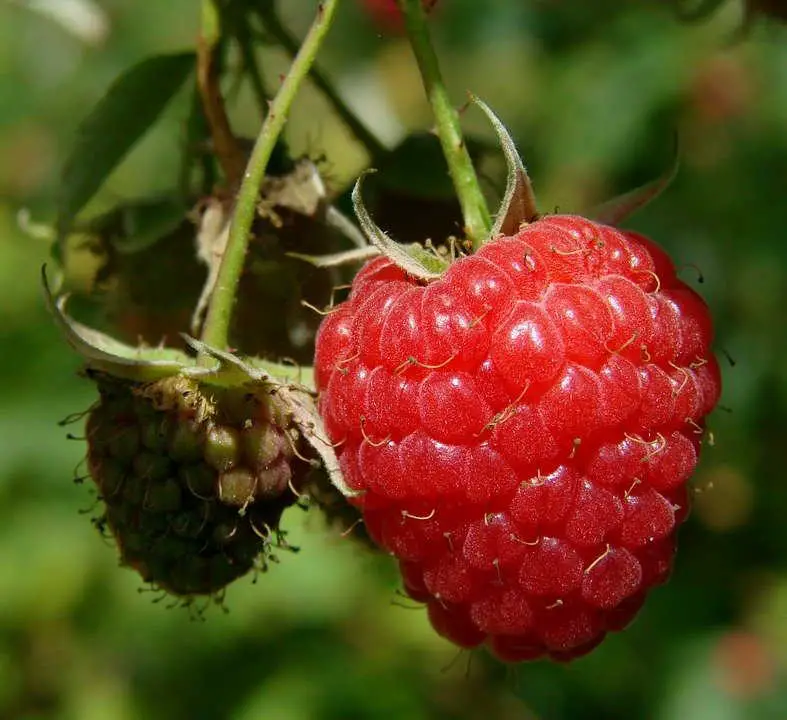
Raspberries are heavy drinkers! Don’t let the soil dry out during summers. Spread mulch around the canes to prevent evaporation from the ground, especially during the hottest days of the season. A good, deep watering once or twice a week should do the trick during the summers. However, remember to water a bit less frequently during the winters. Over the years, the bush will also appreciate a heavy top-dressing with well-rotted compost.
Tip No. 5: Prune Them Right
Pruning is vital for a healthy raspberry bush. It may sound brutal, but the entire purpose is to promote the new fruitful canes’ growth by getting rid of the older ones that have already delivered.
For summer-bearing raspberries, prune the canes to the ground after picking the berries. However, only cut the canes that gave fruit! In contrast to the newer, green ones growing right beside that are NOT to be pruned, these will be the older brown ones.
For the fall-bearing or everbearing raspberries, cutting back to the ground in late winters means that you’ll be harvesting a single fall crop only. Double cropping autumn raspberries is possible by pruning only the canes’ tips that delivered fruit in the fall. Leaves the lower, green portion to fruit the next summer, cutting them back to 45 inches from the ground once you’ve picked your summer berries.
I hope you have a successful harvest now that you have learned about how to get them growing correctly. One of my favorite things to do with raspberries is to freeze them and make jam! I enjoy hearing user stories and I would love to hear and see photos of your raspberries.
Please leave any comments or questions below.


We planted 5 Autumn Bliss raspberry canes last year and only 2 have “appeared”. Will the other 3 appear next springtime or are they lost forever? All 5 were planted in the same bed at the same depth etc.
Are there any signs of growth at all? Raspberry canes multiply quite quickly so I will expect you will get many more come up next year
Hi I have raspberries plants, last year had lots new growth I had to cut some because they were like withered the old branches had fruit last summer, but this years the new canes from last year didn’t shoot any leave er are already Jun 19 they look like dead , please can you tell me what to do , thanks you
It could be verticillium wilt, have a look at this and let me know if you think it’s it? https://ohioline.osu.edu/factsheet/plpath-fru-04
Raspberry bush not very tall like other years and staying low to the ground.. why? My landlord covered them with leaves in the fall and still has not removed them from around the bottom… could that be why.. not enough oxygen to the roots?
Mine are the same this year, I am in the UK and it’s definitely been the weather here. A colder start has made a difference.
We had lots of raspberries last summer. Now in winter they are mostly dry canes. Should we prune them to the ground? How should we prune?
Is mulch that consists only of wood shavings okay?
These bushes are in a community garden. I don’t know how old they are, but it has to be over 5 years.
Thank you for whatever help you can provide.
Hi Karen,
yes its a good idea to prune them. Here is a guide a wrote on the subject please let me know if I can help further.
https://homegardenveg.com/what-happens-if-you-dont-prune-raspberries/
Kind Regards
Greg
I planted about 35 Tulameens (apparently 1 yr old from a commercial nursery in February 2021– all were planted the right depth in well drained loam with good fertilizerer. All but 2 survived and had green leaves in 2021—10 OR 12 plants actually produced from one berry to 5 or 6 berries. plenty of water. I mulched them with an about two inches of well rotted sawdust and well rotted horse manure. All my other berries in the same garden thrived. I cut off the fruited canes in the fall. This spring I have the canes I left last fall with very few green leaves at the top and no new shoots coming out of the ground—-my other berries in the same garden have green leaves all over the canes and new shoots coming out of the ground. suggestions?
Thanks for your question. What about the position of the plants? is it in full sun? do you see any signs of disease? How close are they planted? Are they near potatoes (potential for blight). I haven’t grown this variety before how are they for flavor?